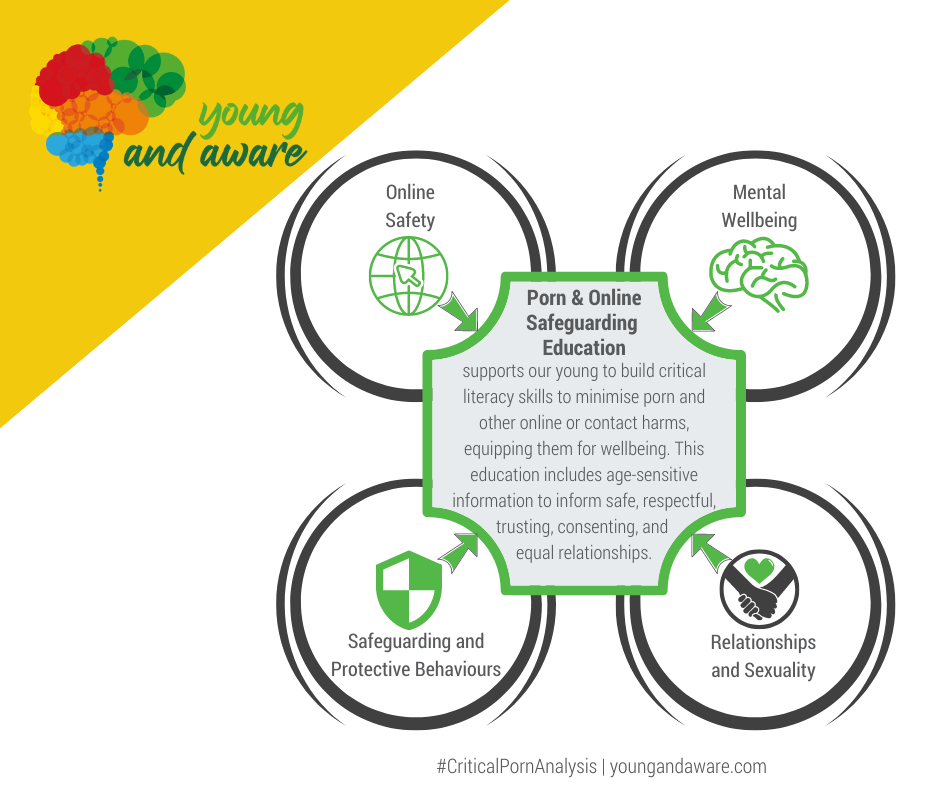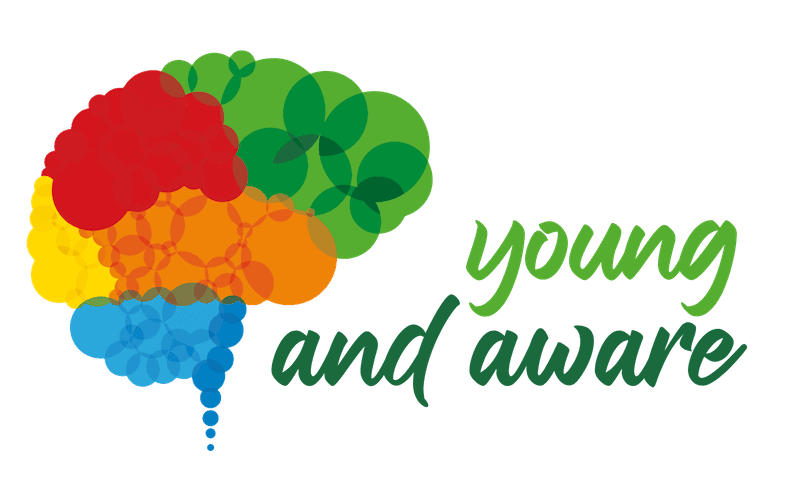Porn & Online Safeguarding Education (POSE) supports our young to build critical literacy skills to minimise porn and other online or contact harms, equipping them for wellbeing. This education includes age-sensitive information to inform safe, respectful, trusting, consenting, and equal relationships.
POSE situates porn education within a framework of balancing content around other pivotal areas of accepted child development and safeguarding education. Elements include Online Safety, Protective Behaviours, Mental Wellbeing, and Relationships and Sexuality Education. We invite the reader to consider the following.
Online Safety Education
- Online Safety Education teaches our young how to interact online and equips them to make safe choices. It can include social media use, identity theft, image-based abuse, cyberbullying, cyberstalking, grooming and exposure to unreliable information or illicit materials. However, for various complicated reasons, porn is often left off the list–or referred to as “inappropriate content”. It is rare for our young to receive an opportunity to understand why porn is an issue that directly and indirectly impacts their personal and interpersonal safety. Additionally, learning often has minimal focus on how porn can influence their attitudes and online choices, such as engaging in tech-facilitated abuses or being groomed to accept sexual abuse.
Safeguarding Practices and Protective Behaviours Education
-
- Safeguarding practices consider the broader social context of safety for our young. The UK organisation, Contextual Safeguarding, has defined this:
- Contextual Safeguarding is an approach to understanding and responding to young people’s experiences of significant harm beyond their families. It recognises that the different relationships that young people form in their neighbourhoods, schools and online can feature violence and abuse. Parents and carers have little influence over these contexts, and young people’s experiences of extra-familial abuse can undermine parent-child relationships.
- Therefore, children’s social care practitioners, child protection systems and wider safeguarding partnerships need to engage with individuals and sectors who do have influence over/within extra-familial contexts, and recognise that assessment of, and intervention with, these spaces are a critical part of safeguarding practices. Contextual Safeguarding, therefore, expands the objectives of child protection systems in recognition that young people are vulnerable to abuse beyond their front doors.
- Safeguarding practices consider the broader social context of safety for our young. The UK organisation, Contextual Safeguarding, has defined this:
-
- Protective Behaviours Education is a crucial life skill and provides an opportunity to embed POSE from a young age. PB West has defined this life skill to incorporate the following:
- A strengths-based life skill that encourages personal safety, self-empowerment, empathy, connection and responsibility to others’ rights–and responsibility for an individual’s own right to feel safe all the time, giving them confidence and strategies to live safe adventurous lives.
- Protective Behaviours (PBs) develop awareness and connection to others, teaches skills and strategies to avoid victimisation, and promotes healthy relationships that do not victimise.
- PBs are grounded in upholding, respecting, advocating and role-modelling our responsibility to, and responsibility for human rights, particularly the “Rights of the Child”.
- PB themes and strategies often compliment or form protective education programs for children. A Protective Behaviours practitioner facilitates personal safety, self-determination, agency and self-empowerment in every interaction.
- Protective Behaviours Education is a crucial life skill and provides an opportunity to embed POSE from a young age. PB West has defined this life skill to incorporate the following:
Mental Wellbeing Education
- Mental Wellbeing Education is often a high priority for schools and community organisations. There exists the potential to incorporate education for our young on the science of how porn impacts mental health, focus, and learning. However, without training, educators may not understand the implications of porn on mental health and wellbeing. As such, porn addiction (of increasing concern among student cohorts) is often not addressed. The reader can access research, therapeutic tools and videos about compulsive sexual behaviours by clicking here.
Relationships and Sexuality Education
- Relationships and Sexuality Education (RSE) is often ad hoc or inconsistent. In some instances, it can also be misguided or conflict with safeguarding, protective behaviours and online safety messaging. There exists a need for non-harmful RSE to acknowledge how porn undermines pivotal aspects of healthy relationships—those that are safe, respectful, trusting, consenting and equal. An example of harmful RSE is the normalisation of masturbation to porn without acknowledging how porn can influence sexual scripts, or contributes to addictive behaviours and sexual dysfunctions.
Young and Aware resources are guided by the Porn & Online Safeguarding Education framework.

